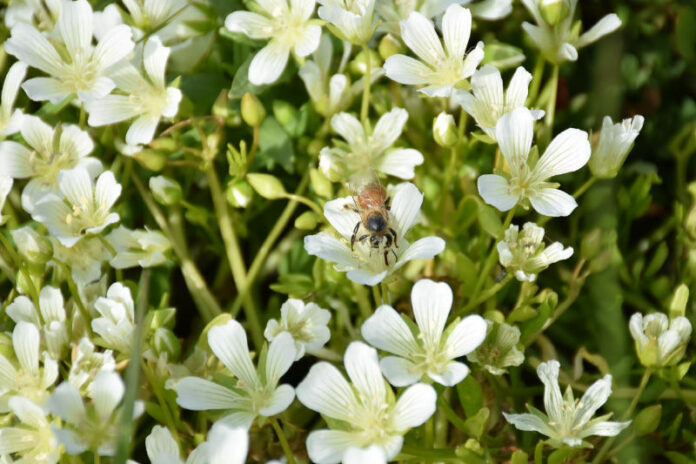Last July, we did an article on the efforts of the Laguna Foundation to restore a native colony of Sebastopol Meadowfoam, a small, white wildflower. It turns out those efforts were wildly successful as you’ll learn in this article from the Laguna Foundation.
The vernal pools on the Santa Rosa Plain are a unique ecosystem with endemic plant and animal species that are distinct from their close relatives found elsewhere in California. Vernal pools are seasonal depressional wetlands that fill up with rainwater in winter and spring, and typically dry up during the warm summer months.
This distinctive habitat historically covered much of the Santa Rosa Plain, but habitat loss and mismanagement has reduced the remaining vernal pools to discontinuous patches, resulting in three plant species and one amphibian, the California tiger salamander, being listed as endangered by both the state and the federal government.
Most of the remaining pools are privately owned or closed to the public, but a recent effort to restore vernal pool habitat has been taking place in the Sonoma County Regional Park right next to the Laguna de Santa Rosa Trail in Sebastopol.
With funding from Regional Parks and Sonoma Water, the Laguna Foundation and partners are working to bring back vernal pool diversity by restoring a local population of an endangered plant, the Sebastopol meadowfoam.
Historically, vernal pool plants were maintained by native grazers, such as elk and pronghorn antelope, and later by cattle. Since grazing ended there in 2005, these pools, like so many others on the Santa Rosa Plain, were invaded by non-native grasses and choked with dead plant material, known as thatch. A key aspect of the restoration effort has been to reintroduce grazing, which observant hikers will have noticed for the last two summers. Sheep have been eating the grass and weeds and breaking up the thatch with their hooves.
Each summer a local grazing company, Sweetgrass Grazing, carefully moves the sheep around the field, making sure to protect the young restoration trees and unique vernal pool plants while discouraging non-natives, including the invasive perennial pepperweed.
The return of Sebastopol Meadowfoam
In the summer of 2018, the Laguna Foundation obtained a permit to collect a small percentage of seeds from the last few remaining Sebastopol meadowfoam plants found on the site.
In spring 2019, The Laguna Foundation scientists planted those 500 seeds in their native plant nursery, growing them to maturity and harvesting the seed to be used for restoration. By the fall of 2019 we had 130,000 nursery-grown seeds ready to go back out into the vernal pools where meadowfoam was once abundant.
Students from the Santa Rosa Junior College came out and helped rake up and remove the last of the thatch. Laguna Foundation staff carefully spread out the seeds and waited.
After the rains in December 2019, the pools filled and our seeds germinated and started sending up leaves through the water, and everything seemed to be going well. Then the rains stopped and the pools dried up much earlier than normal. In mid-March 2020, Laguna Foundation biologists were sheltering in place with the rest of the county and they had no idea what was happening with their special plants.
In mid-April, Regional Parks gave them permission to go out and monitor the pools and they were thrilled to see that despite everything their restoration was a tremendous success. Sebastopol meadowfoam was spread out again across the field like white foam. The removal of the thatch had also created the necessary bare ground for other native wildflowers to thrive, including smooth goldfields, maroonspot calicoflower and buttercups.
Vernal pools once dominated by thatch and non-native species were now buzzing with bees and insects visiting the stunning wildflower displays.
The success of this project now is in now full bloom.
— Submitted by the Laguna Foundation









